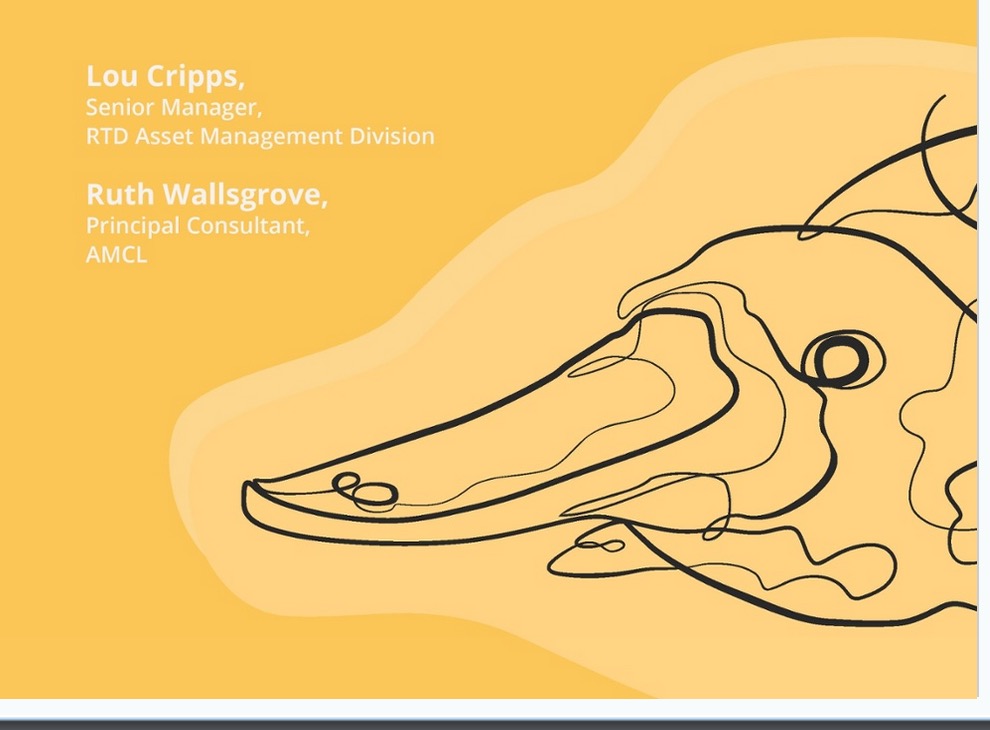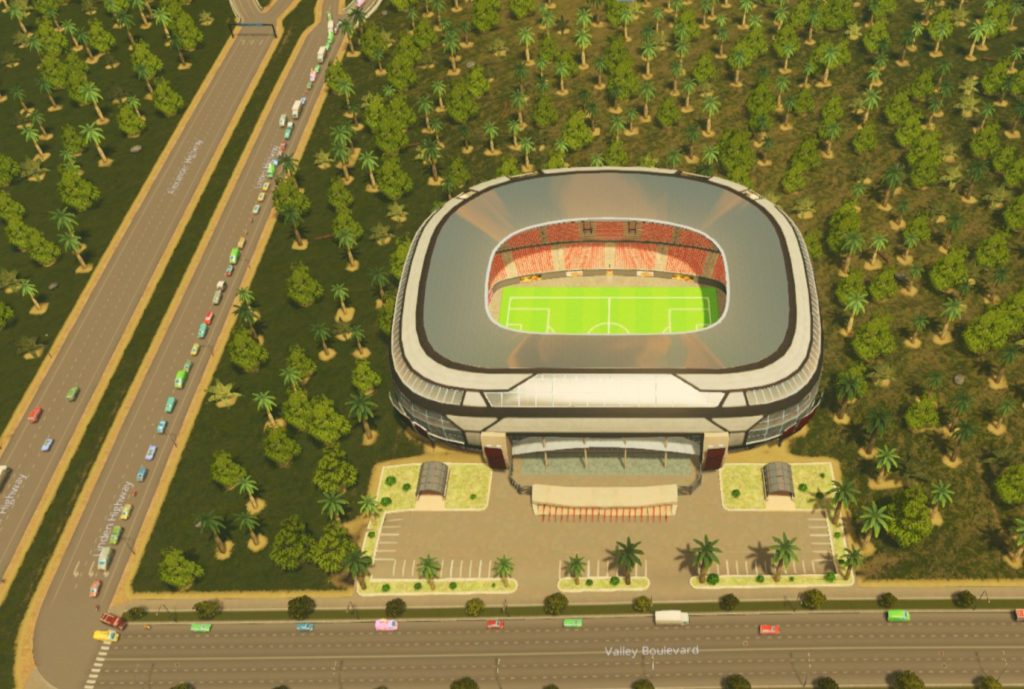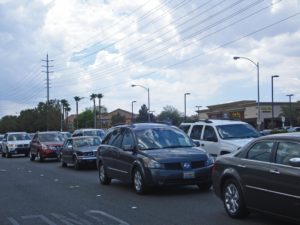
Most simple definitions of Smart Cities include goals along these lines:
- Improving transportation
- Enhancing sustainability
- Promoting economic development
- Improving public services
- Improving quality of life
There can be more, or fewer goals (I have compiled a non-exhaustive list of 78 that fall under the smart city umbrella) in part because smart cities mean different things to different people:
- For a politician, a smart city address the challenges facing urban areas, improves the quality of life for its citizens, creates new economic opportunities and drives economic growth and development. It also provides an opportunity for politicians to demonstrate leadership and innovation by using technology to improve the lives of citizens.
- The economist sees an integrated approach to urban planning and development that uses technology and data-driven approaches to improve performance and sustainable economic opportunities, growth and development with new business and investment opportunities, and improved competitiveness.
- Civil engineers may see improvement in the performance and sustainability of the city’s infrastructure.
- The planner, a way to identify and address key urban challenges and optimise the functioning of the city’s systems and services.
A dummies definition:
Smart Cities use technology to make cities more livable, efficient and sustainable.
But wait – these goals have been the aim of city administrators form time immemorial. The only difference is the addition of “technology”, and the use of technology in very specific ways:
- Measuring things that matter in a way that allows for timely and rational decision making.
- Providing meaningful access to information for citizens and stakeholders.
The introduction of technology and data analytics in a smart city setting allows for the implementation and achievement of city goals in a more efficient and effective way. It allows for informed policies and programs leading to better infrastructure decision making based on a more accurate understanding of the city and its needs.
Technology and data analytics in smart cities can also allow for better monitoring of progress towards goals, and improved transparency and citizen engagement.
So Smart Cities are simply those that find ways to achieve their goals through the application of technology.
Except it’s not simple.
No single project has the necessary budget to implement enough smart city technology to achieve its own goals. Traditional project funding arrangements do not yield smart cities. They give “projects with cameras”. The city part of Smart City is the key. To achieve a smart city all projects and activities, large and small, need to have a city-wide focus. Where there is opportunity to extend a protect to further the technological goals of a city’s progress to smartness, these opportunities must be seized and exploited. This can generate significant organisational stress, as funding priorities are analysed. A playground that gives 100% fun may need to give 80% fun, and 20% smartness – a difficult pill for some to swallow; and 20% smart might not be enough for the boffins, so they have their own bitter pills. This internal stress requires strong policy and leadership if a smart city state is to be achieved, and “smartwashing” avoided.
Smartwashing, like greenwashing, and other washings, refers to “projects with cameras” being presented as achieving smart goals for political and grant funding reasons.
Leadership, understanding, and communication pave the way to rational decision making through adoption of appropriate technologies, leading us to a smart city.

Digital twinning in the context of asset management and smart cities refers to the creation of a digital replica of our heroes of physical infrastructure, such as buildings, transportation systems, or pumps, with the goal of simulating and analysing asset and system performance.
In fiction, the “evil twin” is an identical copy of our hero, but with malevolent, or prankster intentions. Like an evil twin, the digital twin initially appears helpful or friendly, but as the story progresses, their true malevolent intentions become clear. The evil twin tries to manipulate thinking by posing as Our Hero and causing distrust and confusion among those who know and love them. The Evil Twin suggests things that don’t seem quite right, but friends and families accept them; the Evil Twin is very plausible.
These suggestions are increasingly divergent from Our Hero’s true nature, yet family and friends continue to accept them, even as the results place everyone in an increasingly perilous situation.
Eventually there is a confrontation between Our Hero and the Evil Twin, where the true nature of both is revealed, and Our Hero prevails… Or the story ends in tragedy for all.
But seriously
Digital twinning is a great tool for asset managers and for supporting smart cities project implementation, but it essential that the twin is understood for what it is, simply a tool. Putting the tool in place will not solve any problems. The interpretation and analysis of the tool is where value lies. Twinning our assets in a generic way is unlikely to yield future benefits. The need to understand our assets and systems remains key.
Know what matters. Measure what matters. Analyse what matters. Integrate what matters. Do this, or you may create an Evil Twin that misrepresents assets and misleads decision makers.

We now have a Publications section. Our first highlighted publication is Building an Asset Management Team by t’s available for Kindle for just a few dollars, and you can read it on eReaders, phones and tablets.
Building an Asset Management Team is a practical and lively guide for anyone who needs to do infrastructure asset management. It tackles who you need and why you need them.
Asset Management is increasingly important, legally mandated in many countries. ISO 55000 defines AM as the ‘coordinated’ activities of an organization to realize value from its assets. But longer term co-ordinated asset plans and strategies take real effort and skills. You can’t just think things better.
To succeed, you require good business understanding, broad technical knowledge of the assets, analytical skills, and great facilitation & communication…. Instead of searching for a platypus, it’s easier to build a complementary team.
Invaluable if you are developing a business case for setting up an AM team, considering where to locate the team in your structure, or how to attract and keep the right staff.
Proceeds of the sales of this book go to Talking Infrastructure. We are a not- for-profit association and we do not charge for membership, so if you would like to support us – and support yourselves – please consider buying this book, and recommending it to your colleagues and asset management associations. Find 5 excerpts from this book by putting ‘AM Teams’ in the search bar.
 A reoccurring theme in our questions is the discussion of the unknowns, how do we go about making the right infrastructure decisions, what are questions we need to ask and find answers to.
A reoccurring theme in our questions is the discussion of the unknowns, how do we go about making the right infrastructure decisions, what are questions we need to ask and find answers to.
We can use as an example the recent and exciting debates over the efficacy of tearing down and rebuilding various stadia in NSW. Setting aside the significant politicking associated with announcements, defending decisions, backflips and the like; the following is clear:
The policy(1) of the NSW government state:
“[W]orld class facilities and ensure Sydney remains the major events capital of Australia.”
“[C]ritical to attracting big-ticket events and visitors, maintaining a strong NSW brand and generating social and economic benefits.” The cost-benefit ratio for the projects hover around 0.6, meaning there is a net cost to the community for generating the benefits.
“[E]nables NSW to bid for and host a wider range of events.” Also at net cost to the community.
The residents of NSW did not believe these are worthy goals, certainly not at the anticipated cost. A petition for reviewing the decision gathered over 200,000 supporters including the Lord Mayor of Sydney (2).
It is certainly not clear how these projects “support liveability for the people of NSW.”, another stated benefit of the projects.
An additional interesting item is reported that “When cabinet first approved the government’s policy of building two stadiums at a cost of more than $2 billion last November, ministers were told the BCR for Allianz was 0.6; potentially up to 0.8 if the value of the asset when it was not being used was counted.” (3) From an Infrastructure Decision Making perspective this is troubling as it indicates that the asset is significantly idle, but more importantly, that ministers may be encouraged to think of cost benefit analysis as flexible, that an idle asset returns value to the community.
Sydney’s Lord Mayor is also reported as stating “she still had not seen a comprehensive business case for rebuilding or remodelling the stadiums.” (4)
From the reaction to the announcements and the public response it is clear:
- The decision-making process for replacing the stadia was not sufficiently robust to withstand the weight of cursory public scrutiny.
- The achievement of benefits that exceed the cost of the project is not a significant motivator for decision makers.
- Claimed financial benefits from policy could not be substantiated.
My question, posed by Rob Didcoe, is “What information can we provide that will allow politicians to make the best possible decisions on behalf of the community?”
1. https://sport.nsw.gov.au/aboutus/OOS/SIG/nsw-stadia-network
2. https://www.change.org/p/premier-berejiklian-stop-nsw-government-wasting-2b-rebuilding-sfs-olympic-stadiums
3. https://www.theaustralian.com.au/national-affairs/state-politics/gladys-berejiklian-crunching-the-numbers-for-stadiums-rebuild-funding/news-story/4c830abd5b2087047c0a3d28d956c972
4. https://www.abc.net.au/news/2018-03-29/nsw-government-backs-down-on-stadiums-backdown/9600654
 In the sharing economy (Uber, Airbnb) participants either earn income from assets that would otherwise be lying idle or benefit from access to assets that they only need for a short while. Now, what started with consumer services, is moving to business. Why own your own combine harvester when you can rent? These transactions are more complicated but possible.
In the sharing economy (Uber, Airbnb) participants either earn income from assets that would otherwise be lying idle or benefit from access to assets that they only need for a short while. Now, what started with consumer services, is moving to business. Why own your own combine harvester when you can rent? These transactions are more complicated but possible.
‘Where can we go from here?’
New possibilities arise when we combine the benefits of the sharing economy with the new technological possibilities of blockchain. For a really simple explanation of what block chain is and how it may change our future, you might want to start here (Hint: it is more than bitcoin)
Once you have read this (or if you are already au fait with block chain) then you may wish to explore how the NSW Government is putting digital driving licences on a blockchain.
Now let’s move on. In my last post I suggested that the vexed problem of transparency might be solved by a combination of our new technologies.
I can see the technology in use within our cities and rural communities underpinning local energy generation, shared facility use between commercial and community groups and significant opportunity for formal Public-Private Partnerships (PPP) where the use and consumption of the asset is clearly demarcated by micro-transactions, allowing real-time transparency.
While the technologies are being developed, the underlying elements of Blockchain and IoT are now firmly in place, the technology is not new, but finding its niche. Much like the development of laser technology.
The future will be determined by the success of these trials, and the adoption of micro-transactions by our government and institutions. Initial trials in Australia and Internationally show reason for optimism that this may be a solution for sustainable funding for many of our shared resources. Perhaps an opportunity for citizens to become “owners†of assets like bridges and tunnels, with charges being apportioned to use with greater accuracy and equity and transparency.
What do you think the future holds?

Transparency of government is the greatest tool we have for ensuring the best decisions are made by officials and functionaries and reducing corruption and poor decision making.
Legislation, guidelines and reviews surrounding Public-Private Partnerships (PPP) abound as we collectively try to find a way for government to utilise private efficiency and expertise without exposing the public to risks associated with corruption of officials and contracts that serve the private rather than public partner.
The problem with many PPPs and government business, are poorly constructed contracts. Inappropriate measures, guarantees of returns and unclear maintenance and renewal responsibilities.
In the past it has been difficult for us to measure the use of infrastructure by different groups, the consumption / degradation of infrastructure, the degree of maintenance and renewal required and applied to infrastructure.
This has lead to simplistic drafting of contracts based on unsupported estimates.
Enter micro-transactions and Internet of Things.
We now have the unprecedented ability to measure almost everything, and cheaply. We have technology that allows us to make the recording of these measurements publicly available and immutable, and we have people writing clever contracts based on micro-transactions.
By combining these things there is opportunity for us to include all aspects of infrastructure in government contracts for PPPs. Reward can flow to the Private Partner based on utilisation, maintenance, renewal of the infrastructure as well as other measurable impacts, such as improvement of performance of the infrastructure, or lessening of burdens on society and the environment.
 Edward de Bono wrote much. His book, Simplicity, I think is very appropriate to apply to asset management and KPI decision making. The part that resonated with me is the difference between simple and simplistic.
Edward de Bono wrote much. His book, Simplicity, I think is very appropriate to apply to asset management and KPI decision making. The part that resonated with me is the difference between simple and simplistic.
In Infrastructure decision making a simple model is a great thing, a simplistic model is a destructive and dangerous thing. This is true in all fields, engineering, economic and social included. Simplistic by definition is overly simple. Unfortunately many of out decision makers have a simplistic understanding of both the English language and the role of infrastructure. You will hear many people calling for a more simplistic solution or approach. They mean “simple”, but one doubts whether the inability to differentiate between simplistic and simple translates into the making of sound decisions.
Regardless, satisfaction surveys, mandated bureaucratic KPIs, single-digit comparisons to like organisations and other such endeavors are simplistic management techniques. They have been over-simplified and are as a consequence of no value.
Simplicity before understanding is simplistic; simplicity after understanding is simple.
– Edward De Bono
Simplistic decisions are tolerated and often demanded by our populations. I believe this is because the general public has little understanding of the complexities of the modern world, and no desire to embrace that understanding. While the situations and decisions can be presented simply by our leaders, there is no political advantage in straying from binary arguments, right and wrong, black and white. The issue here is to help people understand that complex arguments about infrastructure can be presented simply, and be debated on their merits. With this understanding, the people can call for rational debate, not simplistic decision making. As professionals in our fields we can assist by presenting our work as simply as possible and resisting pressure to make our work simplistic.
Question for the day:
What techniques do you use, or know of, that help you to determine whether your reasoning is ‘simple’ or ‘simplistic’?

No I’m not talking about huge structures, but about talking with Uber drivers about infrastructure decision making, and what I have learned from them.
Uber drivers are business people, they are characterised by having a drive for improvement of their lives and are often driving as a second career or while transitioning from one life circumstance to another, new job, new city, new family, etc. They are also polite.
As professional drivers they have a serious interest in transport infrastructure, especially roads. As service providers they will listen to customers’ stories. My drivers are often surprised when I voice the opinion that we don’t need more lanes, roads and tunnels; especially if we are in slow-moving traffic. There then follows a discussion, usually around 20 minutes, that covers the underlying needs for roads, traffic loads and the factors that contribute to peak congestion, the available solutions to the problems of road transport and the contribution that smart, connected technology can make to the problems of city life.
Since my drivers are constant consumers of connected technologies (GPS, booking apps, forecasting software) they have no trouble understanding the benefits that flow from the ideals of “Smart Cities” and easily understand that improvements flow from having information sources connected. They see that transport issues are directly related to things that can be adjusted with a connected view of the world. They also comprehend that the technology needed to address these issues has been available for years, and that it is the lack of integration of business, government and social information and policy that retards us.
What I have learnt from Uber drivers is that a conversation of 20 minutes can change a person’s understanding of infrastructure needs completely, from a view that continuous infrastructure construction is essential to a view that the solution to congestion of all kinds can be addressed with understanding and leadership.
Smart cities are coming, but I’d like the benefits now. Rather than upgrading highways, I’d like to see freely available information that can be used to tell drivers that leaving 15 minutes later will get you to your destination at the same time and with less fuel and frustration. Then service providers like Uber can give me an option to have a cup of coffee before my car arrives and everybody wins.
 President Trump’s protectionist stance has been cemented by executive order withdrawing from the Trans-Pacific Partnership (TPP). Protectionism has swept Europe; Trump is not an isolated believer.
President Trump’s protectionist stance has been cemented by executive order withdrawing from the Trans-Pacific Partnership (TPP). Protectionism has swept Europe; Trump is not an isolated believer.
Much of the world’s infrastructure is built by international firms, their success built on scales of economy and expertise.
In the new protectionist environment, major infrastructure will increase in expense and/or decrease in quality.
My question is – where are the economic advisers, educators and leaders that help people understand the facts of globalisation, rather than the beliefs about globalisation?
 Sydney, the second most expensive city in the world. The new Premier, Gladys Berejiklian, declares it “the biggest issue”.
Sydney, the second most expensive city in the world. The new Premier, Gladys Berejiklian, declares it “the biggest issue”.
Nationals leader Barnaby Joyce tells us to accept it.
But why?
I see this as a complete failure of leadership, and of understanding.
Sydney is lovely, beaches, rivers, parks, infrastructure. There are beautiful beaches for the length of the eastern coast. There are rivers and creeks everywhere. Parks abound. So infrastructure is key to the attraction of Sydney, and to the escalating costs, congestion and other trials for our leaders.
To quote “Field of Dreams” “If you build it, they will come.” And they do, by the thousands.
I spoke to a group of young people and asked them why they moved to Sydney, “because it is close to everything” they told me.
Building more infrastructure in our capitals generates more demand to live in our capitals.
Our regional centres spend year after year, planning different ways to improve the lot of their citizens, without significant success. The deck is stacked against them.
Until our secondary cities can offer proximity to services (and that means infrastructure) they will remain a “negative good” in the minds of our young people, our new people and our businesses.
Long term planning is necessary to relieve the pressure on our exploding Capitals and bring equity to our regional centres. We don’t need a way to build more free-standing dwellings in Sydney. We need to lift the service provision in other areas.
How can this be done?

Recent Comments